US PMI manufacturing dropped to 53.0 in February, lowest level in 18 months. Markit noted that “operating conditions improve at slowest pace since August 2017 “, “rates of output and new order growth soften”, and “inflationary pressures ease”.
Chris Williamson, Chief Business Economist at IHS Markit said:
“The PMI indicates the US manufacturing sector is growing at its weakest rate for one and a half years, with firms reporting a marked easing in production growth in February, linked to a similar slowdown in order book growth.
“The survey exhibits a strong advance correlation with comparable official data, and suggests that factory production and orders growth rates are close to stalling mid-way through the first quarter, albeit in part representing some pay-back after a strong January. Export markets remained the principal drag on order books.
“Having seen demand grow faster than production through much of 2018, order book and output trends have come back into line in recent months, hinting at an alleviation of capacity constraints as demand cools. Backlogs of works barely rose as a result, and price pressures have likewise moderated, though tariffs were again reported to have pushed costs higher. Hiring has consequently also slowed.
“Worries regarding the impact of tariffs and trade wars, alongside wider political uncertainty, undermined business confidence, with expectations of future growth running at one of the most subdued levels seen for over two years and suggesting downside risks prevail for coming months.”




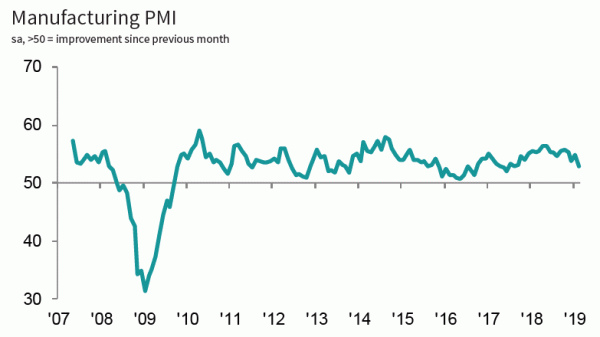
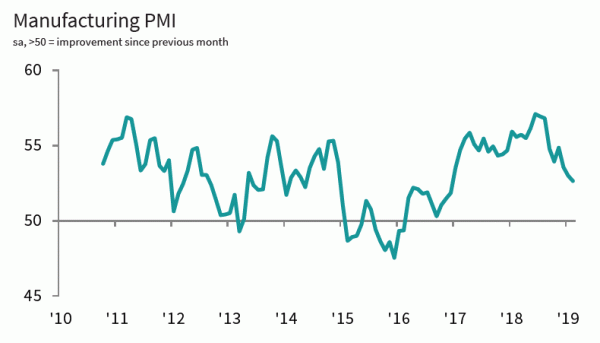
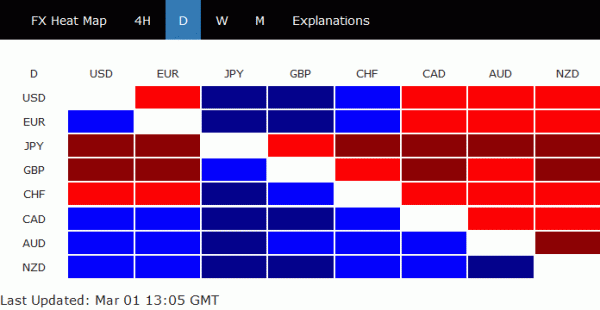
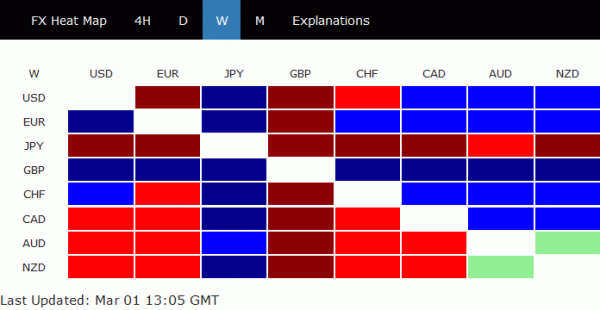
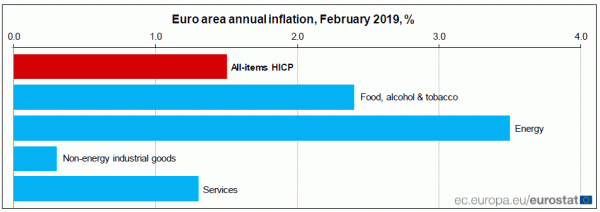

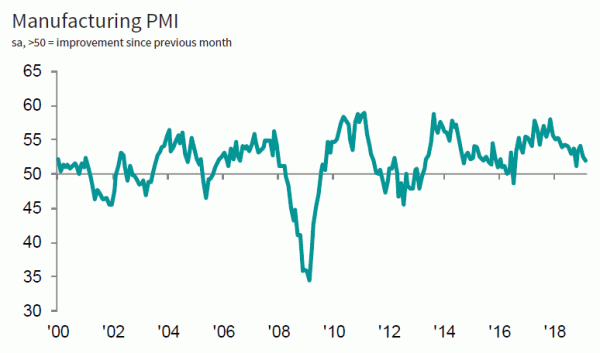
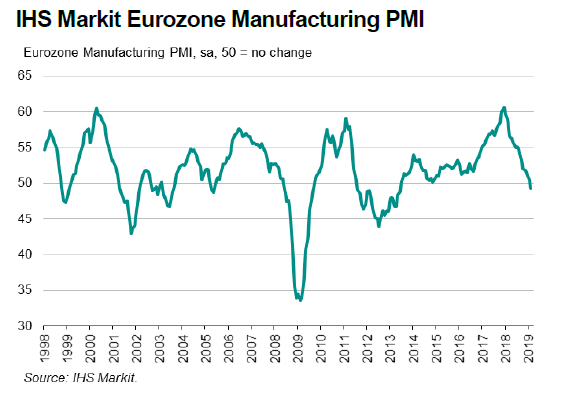
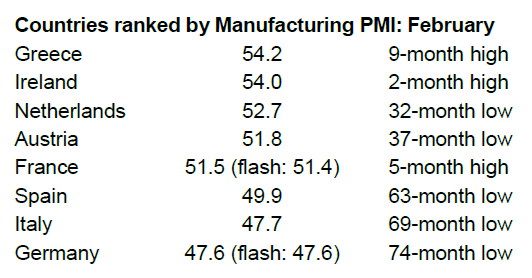
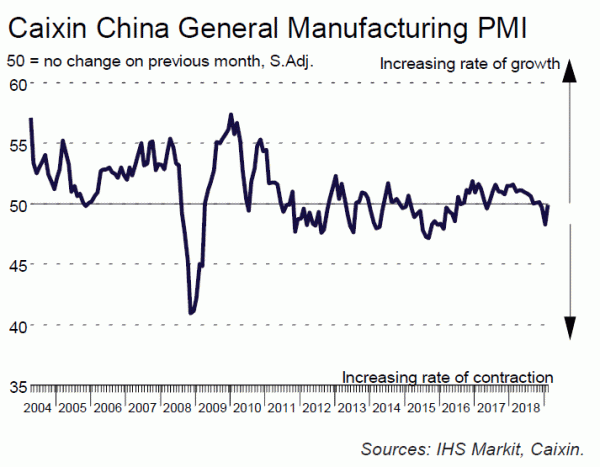
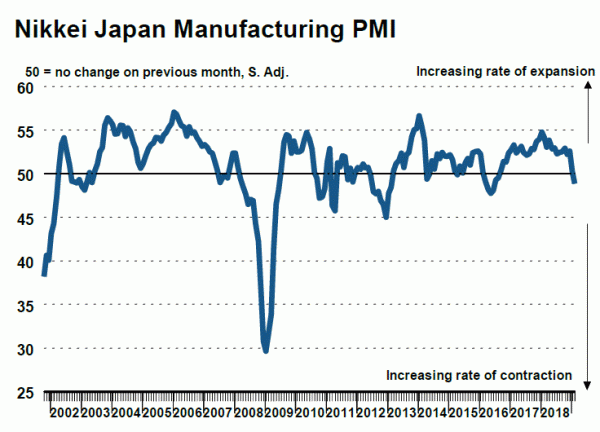
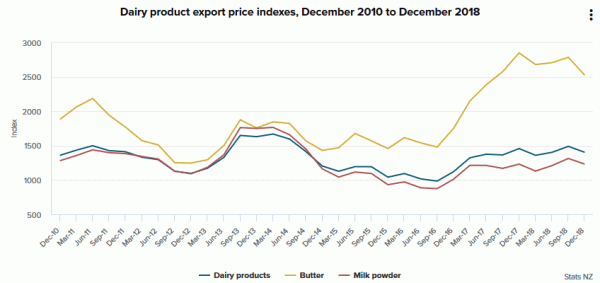
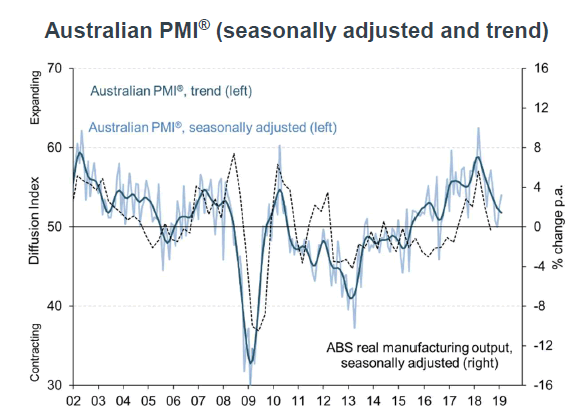
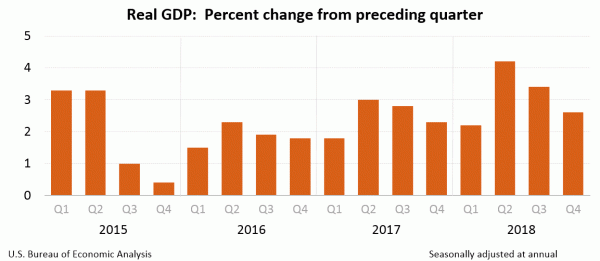
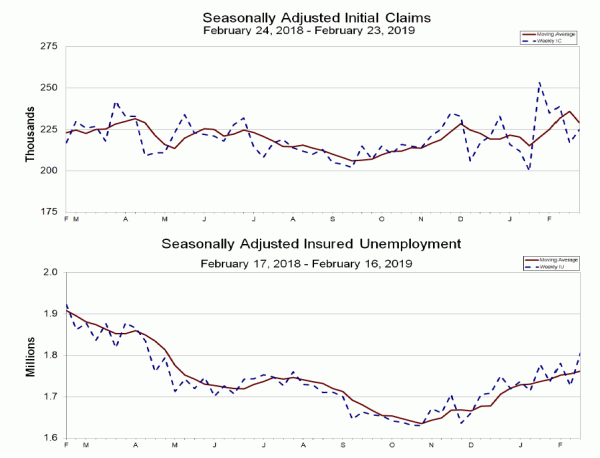
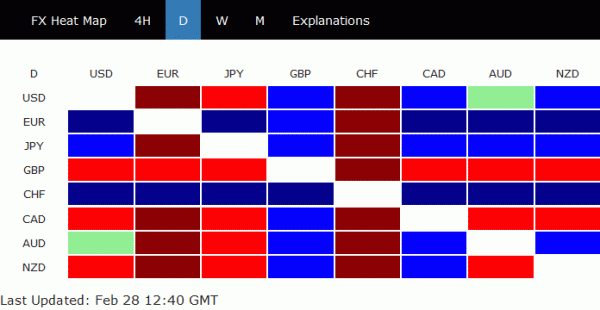
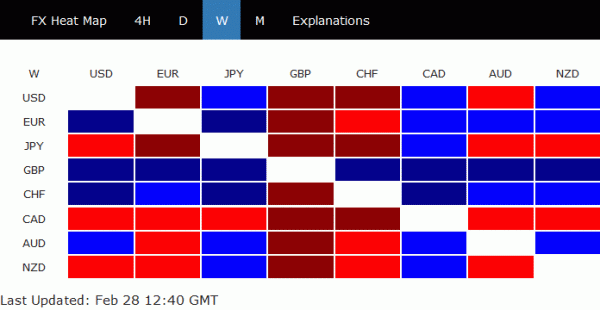
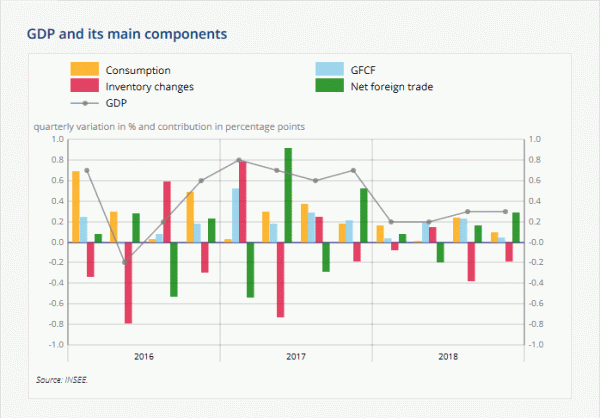

US ISM manufacturing dropped to 54.2, employment dropped to 52.3
US ISM manufacturing index dropped to 54.2 in February, down from 56.6, missed expectation of 56.0. Looking at the details, new orders dropped -2.8 to 55.5. Production dropped -5.7 to 54.8. Employment dropped -3.2 to 52.3. Prices dropped -0.2 to 49.4.
ISM noted that:
Full release here.